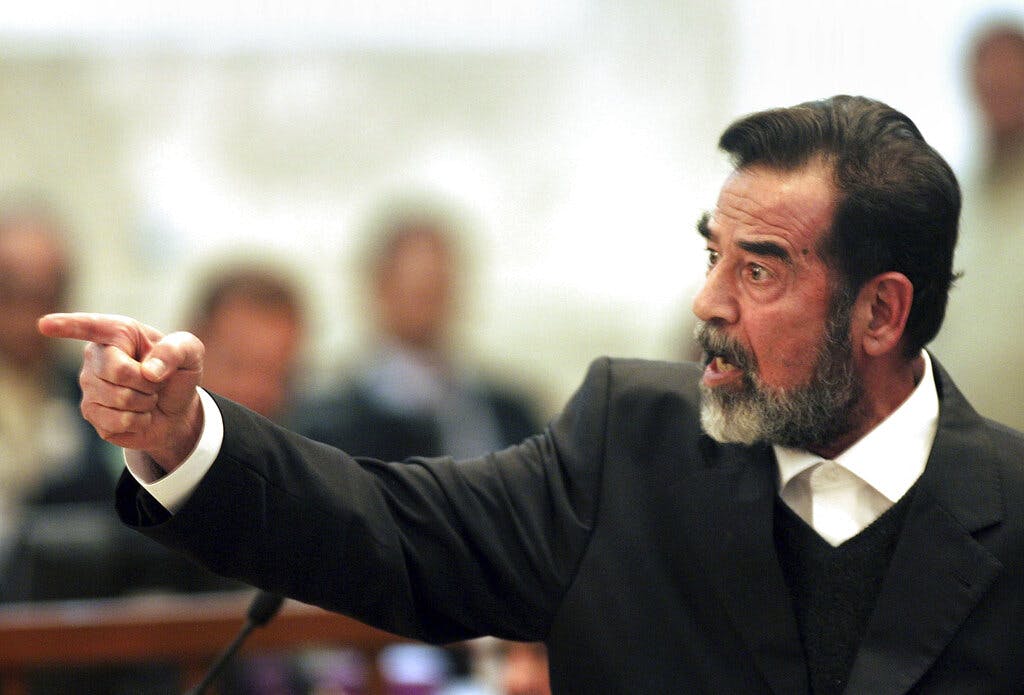Twenty Years Later, America’s Invasion of Iraq Is Deeply Misunderstood
We didn’t destroy Iraq. We put it on the road to competitive elections and a ratified constitution.

On the 20th anniversary of the invasion that finally rid Iraq of Saddam Hussein’s tyranny, the war is deeply misunderstood in America. The conventional wisdom today is summed up by a private observation from Colin Powell, later reported by Bob Woodward in his book, “Plan of Attack.” The former secretary of state warned of the “Pottery Barn rules,” If you break it, you own it.
The problem with this pithy quip is that Iraq was already broken by the time President George W. Bush decided to launch the invasion. What’s more, America had already intervened in Iraq a dozen years before 2003. This crucial context is what is missing today in the drab and somber commemorations of the war.
Contrary to a myth endorsed by many progressives and nationalist conservatives, the war for Iraq was not the result of state deception or ideology run amok. Rather the second Gulf War was a direct consequence of the end to the first one in 1991. Back then, President George H.W. Bush rallied an international coalition to liberate Kuwait from an Iraqi army that had invaded it in 1990.
The coalition routed Saddam’s army, forcing a humiliating retreat. In that moment the Iraqi tyrant was on the ropes. Already, Shiite Iraqis, in southern cities like Basra and Karbala, were beginning an uprising. Meanwhile, an American-led coalition had a clear path to Baghdad to finish the job.
The president, instead of pushing for the collapse of Saddam’s regime, opted to negotiate a ceasefire.
At the same time, Mr. Bush encouraged the Iraqis to take out their tyrant themselves. These mixed messages, in the aftermath of the war, proved to be fatal to both Shiite Iraqis in the south and Kurdish Iraqis in the north. After a ceasefire that allowed Iraq to use its attack helicopters, Saddam turned his army on his own population. It was a bloodbath.
This proved too much for Mr. Bush. Later in 1991, he authorized a no-fly zone, first for the Kurdish provinces in northern Iraq and then for the southern part of the country. The conditions of the ceasefire also proved too much for Saddam Hussein.
Throughout the 1990s and into the next millennium, the Iraqi tyrant flouted the requirement that he demonstrate to United Nations weapons inspectors that he had destroyed the stockpiles of chemical and biological weapons he had before he invaded Kuwait.
After the 2003 invasion, weapons inspectors learned that Saddam intended to persuade Iran and his own population that he possessed the weapons he did not have. The inspectors also concluded that Saddam intended to replenish his weapons of mass destruction as soon as the sanctions imposed against Iraq were broken.
This was the state of Iraq before the 2003 war. Iraqis endured the twin horrors of dictatorship and sanctions. American forces effectively ended both of those plagues. At the same time, Saddam’s Iraqi victims sought payback. The competitive ethnic cleansing that followed the collapse of the Baathist regime was incubated by more than three decades of mass cruelty.
Sooner or later, the bloodletting was bound to happen, as it did between 2004 and 2007. America was unprepared for that civil war. Over time though the military adopted a new strategy that purchased stability for Iraq after the second term of George W. Bush ended.
There is still staggering corruption in Iraq. There is still too much Iranian influence in Baghdad’s politics. There are still threats to the state from the Shiite militias that helped defeat the Islamic State between 2014 and 2017.
Yet, since 2003 Iraq has had six consecutive, competitive elections. Its people have ratified a new constitution. Iraq’s oil industry has come back on line. None of that could have happened had America not ended Saddam’s reign 20 years ago.

